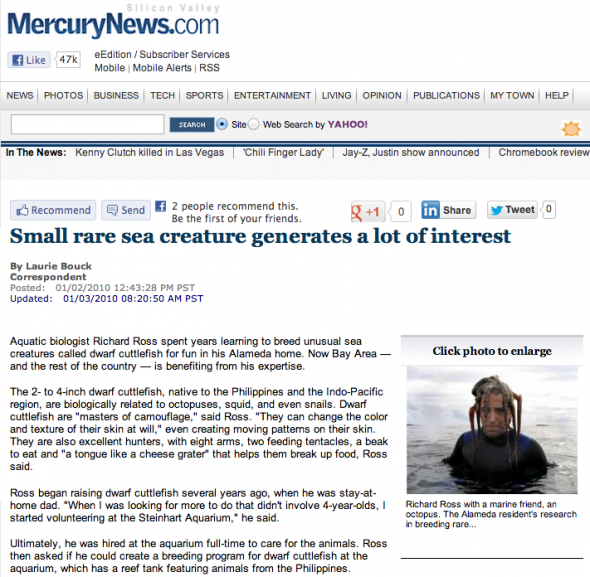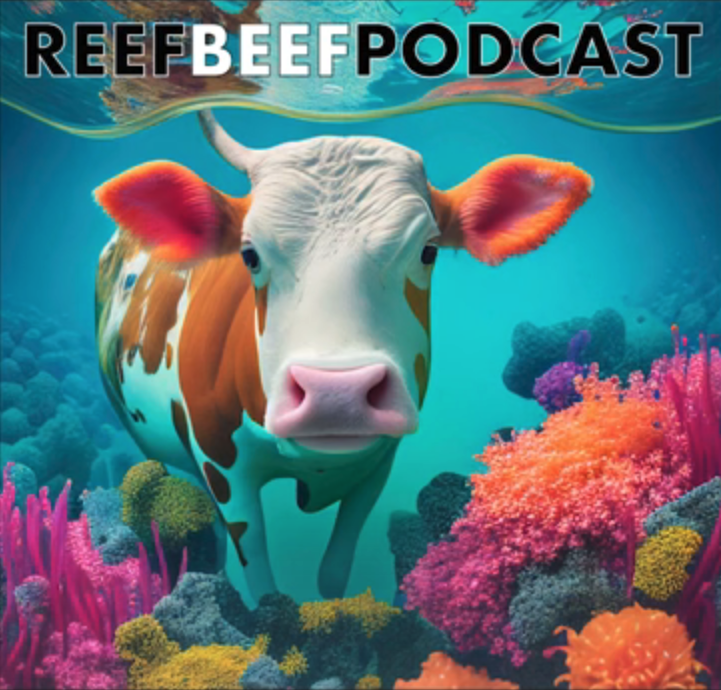From Mercury News
By Laurie Bouck
The 2- to 4-inch dwarf cuttlefish, native to the Philippines and the Indo-Pacific region, are biologically related to octopuses, squid, and even snails. Dwarf cuttlefish are “masters of camouflage,” said Ross. “They can change the color and texture of their skin at will,” even creating moving patterns on their skin. They are also excellent hunters, with eight arms, two feeding tentacles, a beak to eat and “a tongue like a cheese grater” that helps them break up food, Ross said.
Ross began raising dwarf cuttlefish several years ago, when he was stay-at-home dad. “When I was looking for more to do that didn’t involve 4-year-olds, I started volunteering at the Steinhart Aquarium,” he said.
Ultimately, he was hired at the aquarium full-time to care for the animals. Ross then asked if he could create a breeding program for dwarf cuttlefish at the aquarium, which has a reef tank featuring animals from the Philippines.
Thanks to Ross and his colleagues, the aquarium now has the first dwarf cuttlefish breeding program in a United States aquarium. The aquarium’s resources help Ross with the labor-intensive process of keeping the cuttlefish fed and maintaining the saltwater tank correctly.
The dwarf cuttlefish’s
crustaceans-and-fish diet changes as it grows. Ideally, young dwarf cuttlefish need to be fed four times a day. To complicate matters, “they start to cannibalize each other if you don’t feed them,” Ross said. But the cuttlefish are a good fit for the aquarium because they need less space than larger animals, he said.Dwarf cuttlefish live for about a year. To keep them on display for a long time, “the key is a stable breeding population,” Ross said, to create a steady supply of the animals. Aquarium staff are raising about 80 hatchlings (young cuttlefish) and eggs right now to create this pipeline. About 300 dwarf cuttlefish eggs and hatchlings have already been sent to other institutions so that they can breed and display dwarf cuttlefish as well.
About 100 species of cuttlefish have been identified worldwide, with some reaching about 18 inches in length. Cuttlefish are not technically fish; they belong to the Cephalopod class that includes octopuses and squid. Like octopuses, cuttlefish move by jet propulsion, and they sometimes squirt ink to disguise themselves.
Six dwarf cuttlefish and a cluster of their inky purple eggs are currently on display at the Steinhart Aquarium. Because the cuttlefish can blend in with their surroundings, Ross suggests watching the tank for a minute or two until your eyes can spot them. It’s worth the effort, though, because “they’re amazing to watch,” he said.
The Steinhart Aquarium, located in the California Academy of Sciences in San Francisco, contains about 38,000 animals. More information is available online at www.calacademy.org, or call 415-379-8000.

